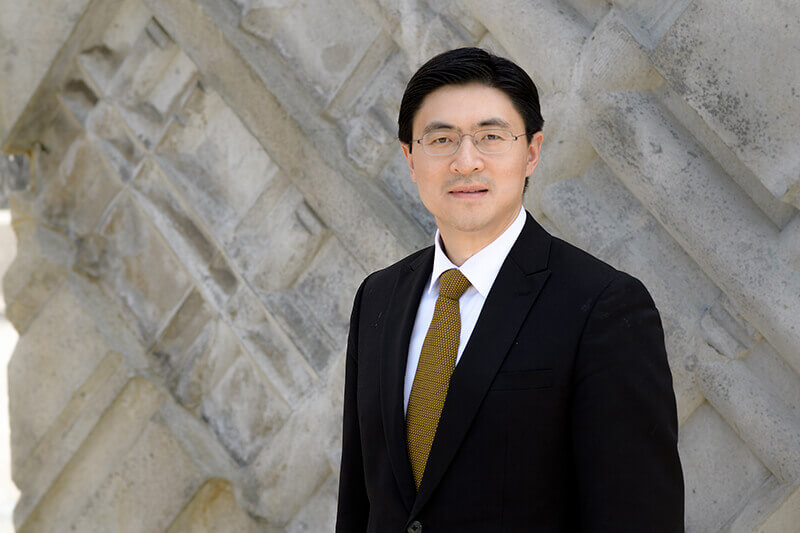February 28, 2019
What will the next 150 years bring for the College of Engineering?
 Mung Chiang, the John A. Edwardson Dean of the College of Engineering. (Photo provided)
Mung Chiang, the John A. Edwardson Dean of the College of Engineering. (Photo provided)
Download image
The sesquicentennial celebration marks a time for Purdue to renew its commitment to growth, discovery and innovation. What giant leaps will the next 150 years bring as Purdue continues its drive to meet the world's future challenges? In this monthly Purdue Today series, Purdue's deans will share their thoughts on the future of their college over the next 150 years. The series continues with Mung Chiang, the John A. Edwardson Dean of the College of Engineering.
What will the next 150 years bring for the Purdue College of Engineering?
“Engineering + X” represents a direction where engineering partners with other disciplines to help shape the conditions of individuals and society.
In trends poised to accelerate in the next 150 years, “engineering + X” holds a key to addressing global challenges, from hunger to poverty to disease to natural disasters to energy innovation to data breaches.
What do these changes mean for the College of Engineering?
As the largest top 10 U.S. college of engineering and part of a large land-grant university, we feel a deep sense of responsibility, opportunity and urgency to apply our unique strengths to play a pivotal role in developing solutions and realizing possibilities.
We aspire to propel Purdue Engineering to the Pinnacle of Excellence at Scale.
We aim at becoming the best engineering college in the world at the interface of virtual and physical sides of engineering. We will leverage long-standing strength in “what-we-touch” engineering and growing “what-we-code” engineering to get ahead of market needs.
We will make online learning not only scalable but also effective. We will provide diverse, innovative choices and support the highest academic standards for each undergraduate and graduate student, even at scale.
We also endeavor to be the best engineering college in the United States in engaging with industry in all areas, including curriculum innovation, workforce development, research impact and entrepreneurship.
What’s next?
This year, we celebrate the 50th anniversary of Apollo 11 and first moon landing by AAE alumnus Neil Armstrong. We also are proud that this is the 50th anniversary of the Women in Engineering Program. And we are definitely continuing the momentum forward. Last year, the great team of faculty, students, staff and alumni in Purdue Engineering gave us a record-setting year in all dimensions -- new records in research awards, in philanthropic support, in student enrollment, and in academic preparation of new students, in graduation rates both overall and for minority engineering students.
And there’s something more. A recent Pew Research Center poll found that 72 percent of Americans trust tech companies “to do the right thing” only some of the time or hardly ever. Incidents such as Facebook’s Cambridge Analytica scandal and a self-driving car killing a pedestrian cause concern to millions of Americans. We can demystify engineering by presenting to non-engineers some of the core principles and ideas behind engineering’s many artifacts. Engineering is not only a discipline but also a language. Many who are not economists appreciate the concepts of inflation and GDP. We hope many citizens will speak a little bit of the language of engineering, too.

